Decorative plaster is a finishing structured or fine-grained smooth coating for walls and ceilings, which consists of two or more layers: basic primer and decorative.
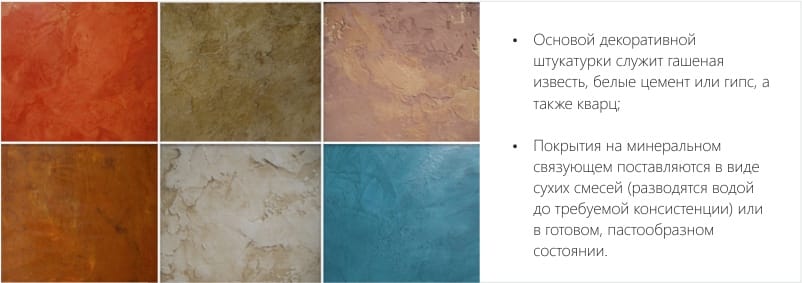
Using decorative plaster in the kitchen is an excellent solution in terms of practicality and design.
The material can be both natural and artificial:
- Mineral - with a marble or granite crumb. It is a dry cement-based blend with additives that provide relief and elasticity. The main characteristic is moisture resistance;
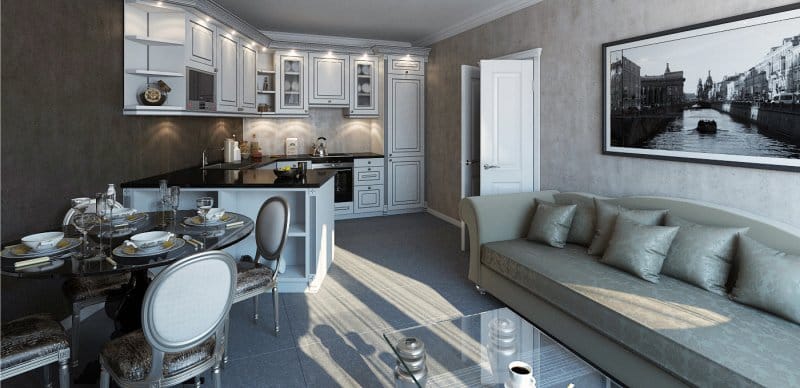
- Acrylic - based on acrylic resins. Completely ready to use composition;
- Silicone - on synthetic resins. It is characterized by excellent adhesion and ease of application;
- Silicate - based on the formula of liquid glass. Such plaster is realized in finished form, it is vapor-permeable and resistant to mechanical damage.
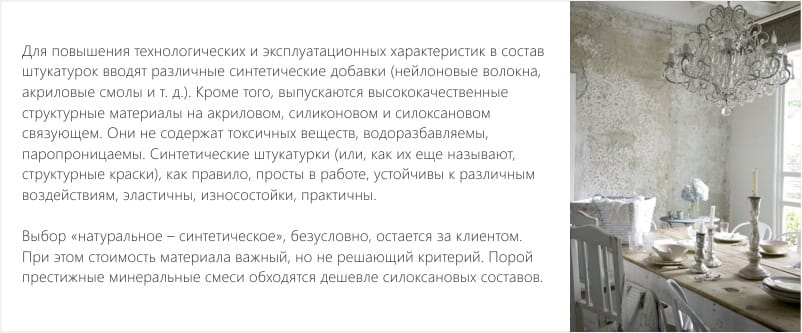
Tip: in terms of practicality, a synthetic acrylic-based coating will be the best choice for the kitchen. It is durable and undemanding in care.
Pros and cons - what you need to know if you are still in doubt
Advantages of finishing with decorative plaster of kitchen walls:

- Versatility of use - it is possible to coat brick, concrete, wood and even metal.
- Seamless.
- Ability to mask irregularities and flaws of the wall.
- Decorative plaster "breathes", that is, has breathability, and therefore naturally participates in the regulation of the microclimate - neutralizes the increased humidity, and if necessary, on the contrary, moistens dry air.
- Due to fungicides and antiseptics in the composition, as well as the same air permeability, such wall covering prevents the occurrence of mold.
- Wear resistance, resistance to mechanical damage.
- Durability, practically not inferior to natural stone or ceramic tile.
- Ease of care - decorative plaster does not attract dust and tolerates frequent, but not “aggressive” washing.
- Full security - decorative plaster for walls does not contain toxic components.
- Fire and thermal stability.
- The possibility of repair - if a fragment of the wall is damaged, then it can be easily restored.
- The variability of finishes and application techniques - the design may vary in color and texture type.
Of course, finishing with decorative plaster has its drawbacks:
- The probability of occurrence of cracks is natural, that is, the mineral finishing coatings are not elastic, so cracks may appear on the wall, for example, due to their movements during building shrinkage. But all damage, as already mentioned, must be repaired.
- The high cost of materials and finishing works - an exclusive design is difficult to create with your own hands - it requires professional skills, so such repairs in the kitchen compared to using ordinary putty, paint or paper wallpaper will cost more.
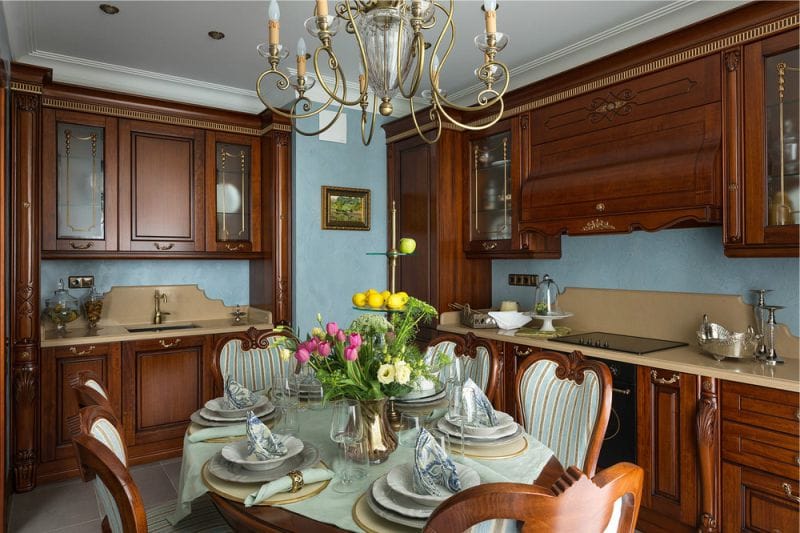
What types are there?
Types of decorative plaster differ not only in the type of binding component, but also in design and application technique. There are a lot of options for the finishing surface, here are the most famous and popular types used to finish the kitchen.
- Imitation stone - Venetian or Moroccan plaster in marble, travertine and other stones.
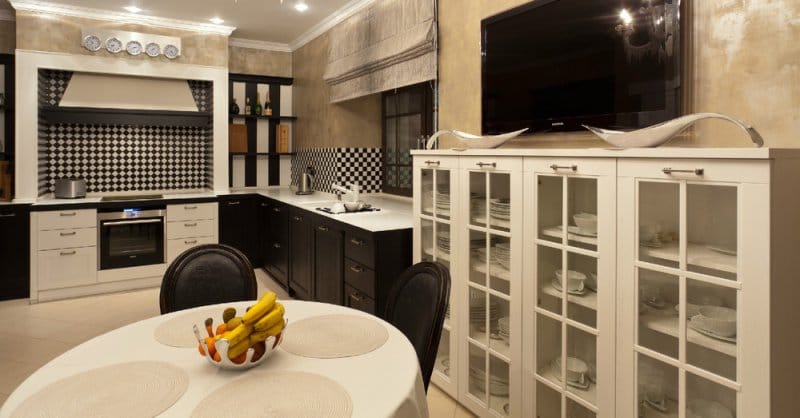
Venetian decorative plaster is a combination of acrylic polymer and marble dust. This is the most famous and old type of wall decoration. The texture of the “Venetian” seems to glow from within and reliably imitate marble, travertine and other stones.
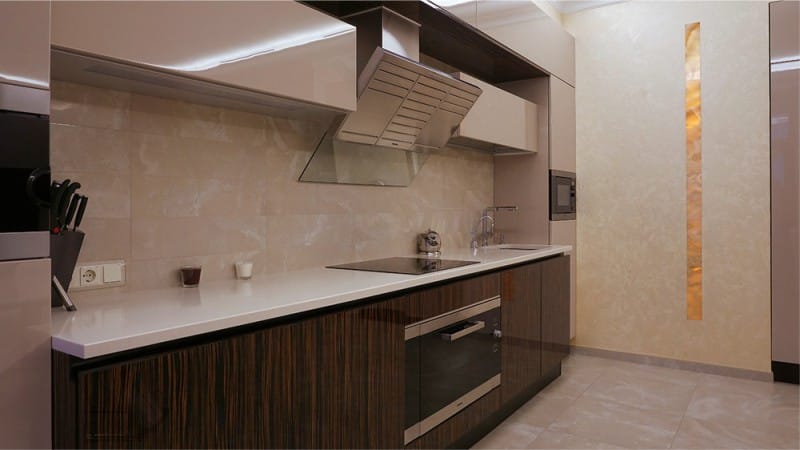
This effect is obtained due to the special technique of applying plaster with a spatula with a color mixing. Most often Venetian plaster made large classic style kitchensas well as in Art Deco, modern and minimalism.
In the photo below Venetian decorative plaster in the interior of the kitchen (scroll to the right).
The complexity of this type of finish is that the surface of the base must be brought to the ideal, since even the most minor flaws will be noticeable.
The technique of applying Venetian decorative plaster with your own hands: the composition is applied with a triangular spatula with small strokes in 4-10 layers depending on the desired depth of the pattern. After the decorative layer has dried, a protective wax layer is applied to the wall.
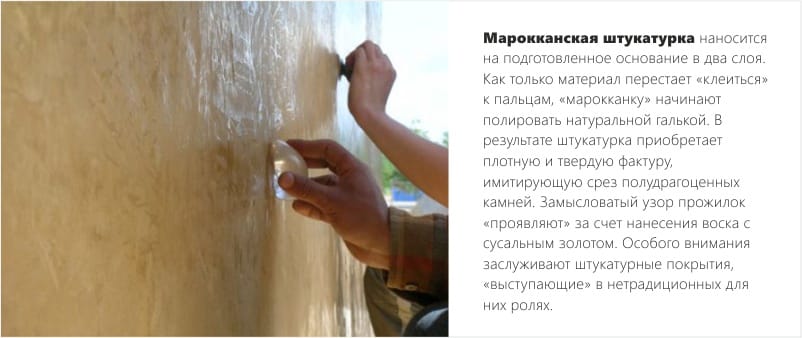
In the photo below, the design of a kitchen with sandstone imitation plaster (scroll to the right).
- Sgraffito - plaster decorated with the sgraffito technique can look like an applique on the wall, and can imitate an aged, peeling surface.
Sgraffito technique: 2 or more layers of plaster of different colors are applied to the prepared wall, and then a pattern or pattern is cut out in the upper layers using a stencil.

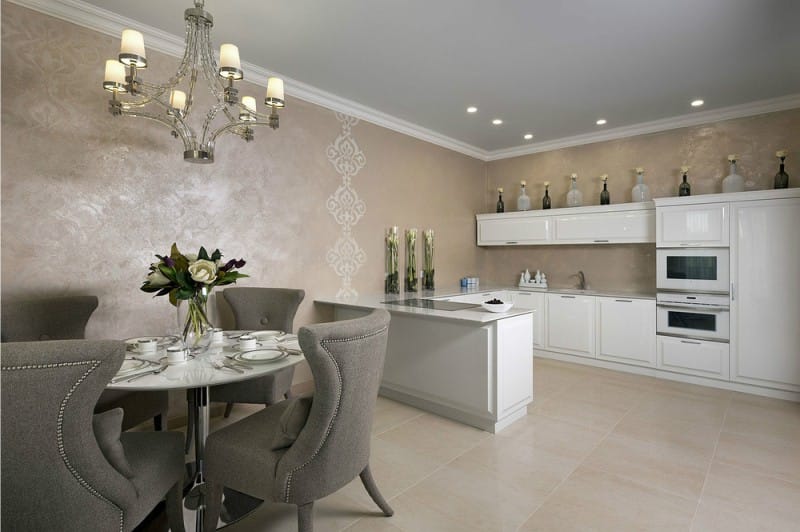
- Silk and velvet plaster - surface with velvet or silk effect. The composition contains pearl particles that reflect the light, creating a deep matte texture with a slight gloss. But like real textiles, plaster imitation of textiles does not have wear and moisture resistance, and therefore less suitable for the kitchen.
- Antique coatings - bark beetle, craquelure.
The effect of oldness can be achieved using the technique of applying craquelure, when the surface is covered with small cracks.
The technique of applying decorative plaster with your own hands: a special compound is applied to the prepared wall (perfect alignment is not required), which cracks when dry. To emphasize the cracks can be further tint.
There are also types of decorative plaster with non-stained granules that burst during the grouting process with a spatula, creating an effect of wear.
And finally, the most famous type of antique plaster is “bark beetle” with fine-grained or coarse-grained filler, which in the process of application and create grooves. The relief depends on both the size of the granules and the movement of the trowel.
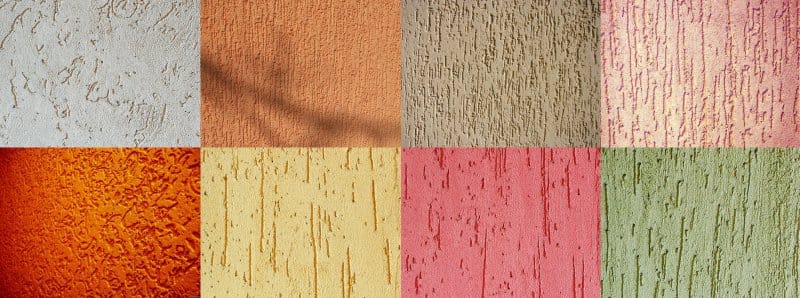
Putting decorative plaster with your own hands according to the “bark beetle” type can be found in the following video:
- Concrete imitation - plaster under concrete may not have a pronounced relief, but you cannot call it smooth either - the “concrete” surface is rather rough, with inclusions of sand and small stones.
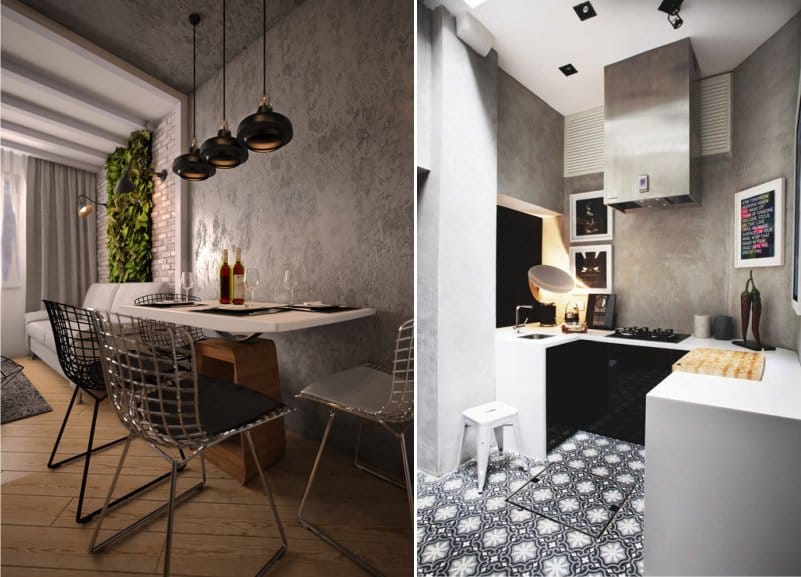
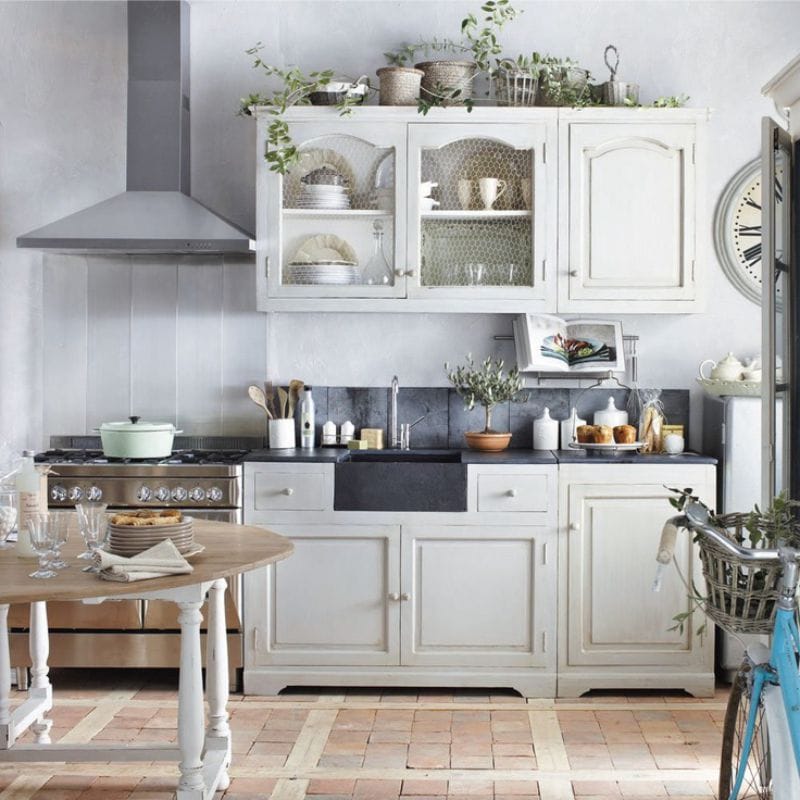
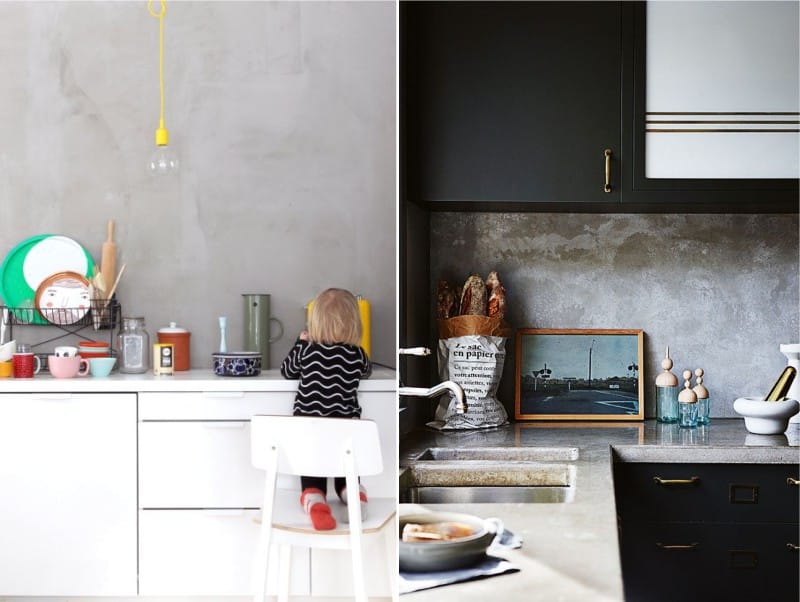
Features of the work
So,
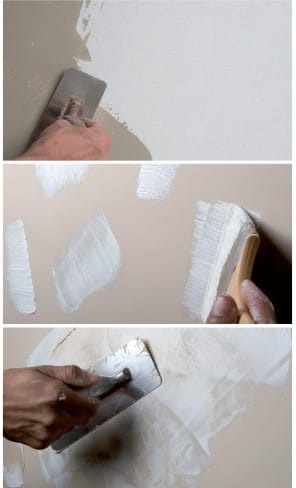
- Before applying decorative plaster, you need to carefully prepare the base. For smooth and thin coatings like “Venetian”, the surface should be brought to a perfectly flat and smooth state, and for rough, structural and relief ones - to a satisfactory one.Keep in mind that the wall must be without any nails and grids under the finish, otherwise the plaster will eventually “pull” rust from the metal to the surface. The wall must be dry, flat and clean.
- After complete drying of the putty, you need to apply an acrylic primer that has anti-mold properties, improves adhesion and thermal insulation parameters;
- Immediately after the primer has dried, you can start tinting, preparing and applying the plaster mix. The applied decorative plaster is not painted - the color suitable for the kitchen design is selected immediately and the appropriate pigment is added to the solution while kneading.
- To give the coating the desired relief, you can use a stainless steel spatula, roller, trowel, sponge or even your hands. Work should be carried out by one person in order to maintain uniformity of texture across the wall. Before applying the composition to the wall, you need to practice hard - to work out the movement and procedure.
- When plastering is completed, the surface should be coated with a special varnish, forming an additional protective layer.
- Himself a painter - painting the walls in the kitchen
- Choosing a wallpaper and background for the kitchen according to all the rules
- Decorating the walls in the kitchen with vinyl wallpaper - 6 steps from shopping to gluing
- Create a unique design in the kitchen - correctly combine the wallpaper
- Non-woven wallpaper in the kitchen: help for the buyer and step-by-step instructions for sticking

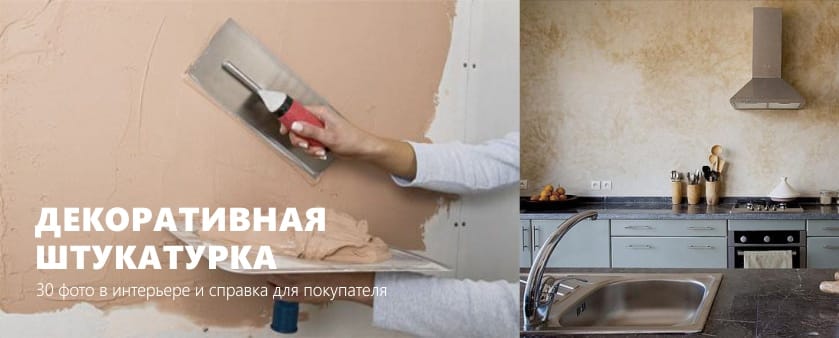
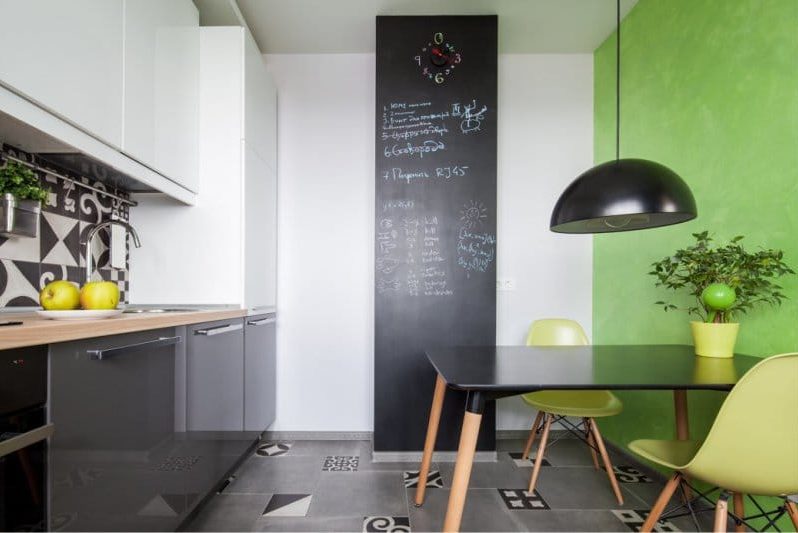
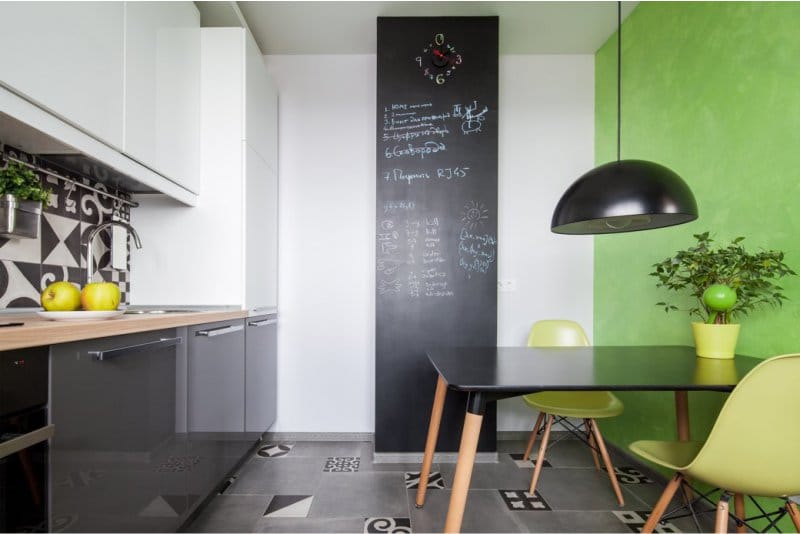
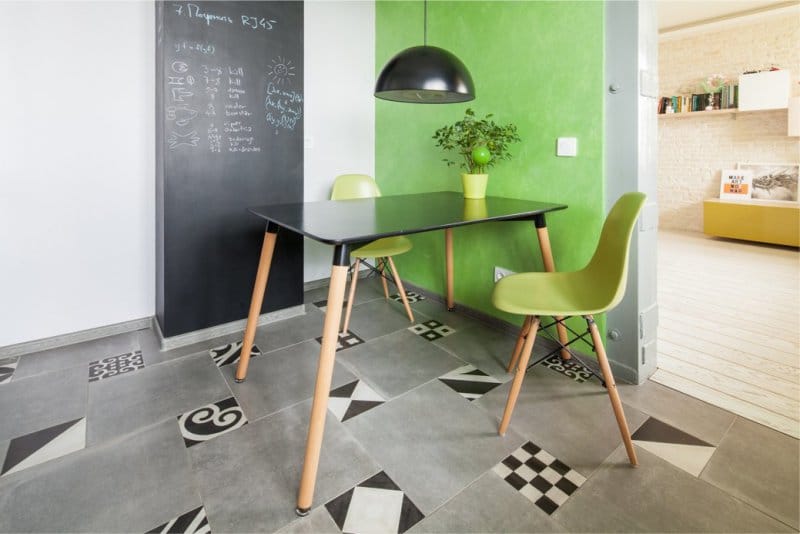
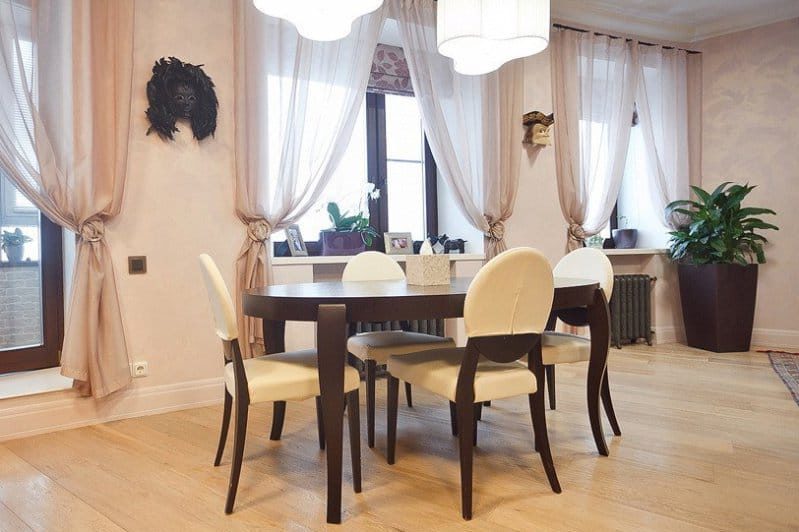
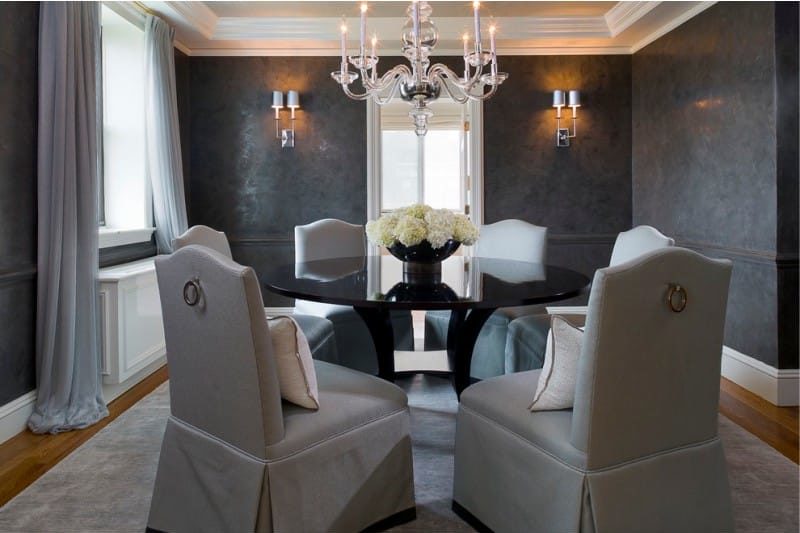

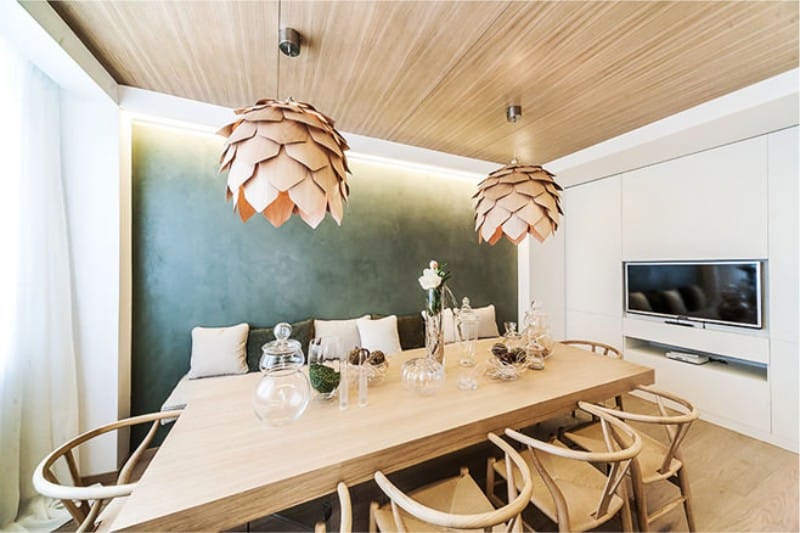

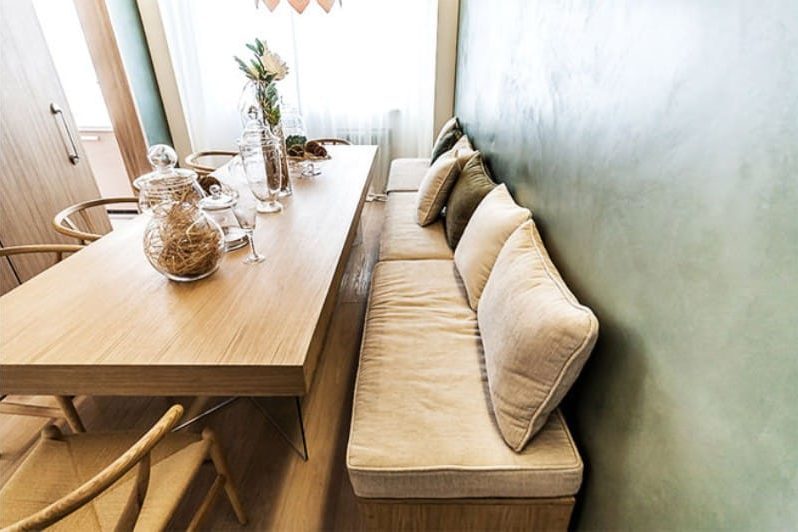
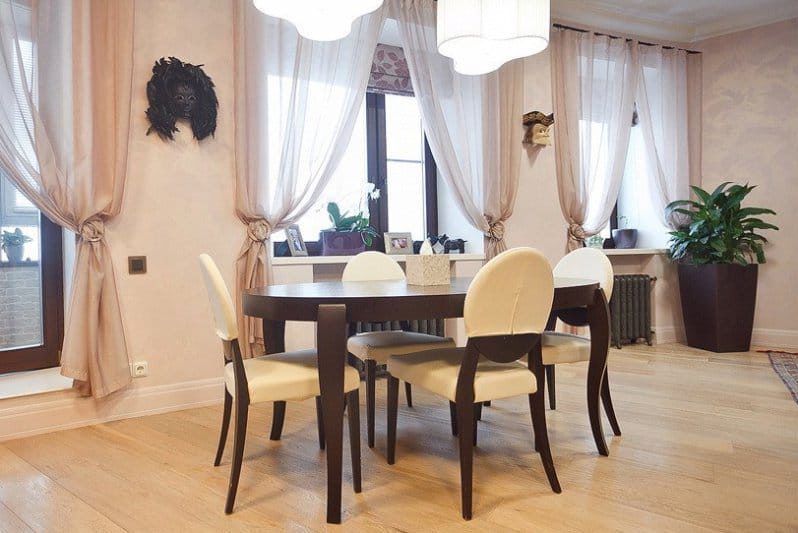
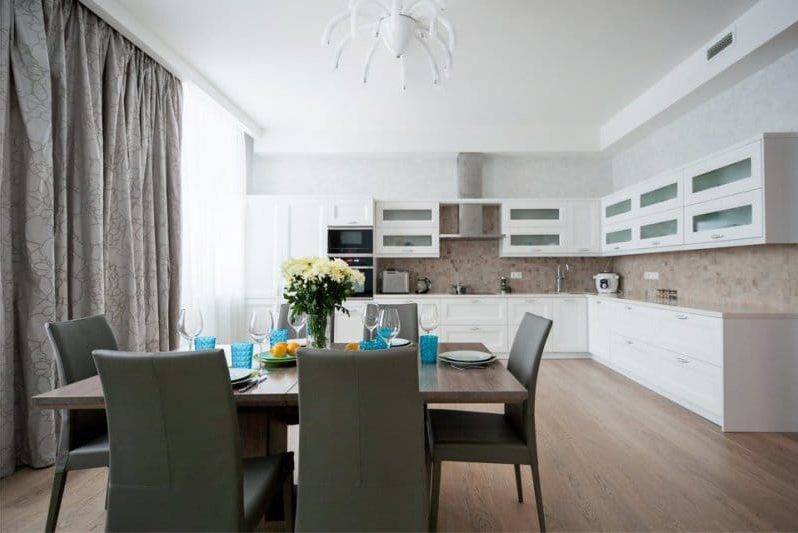
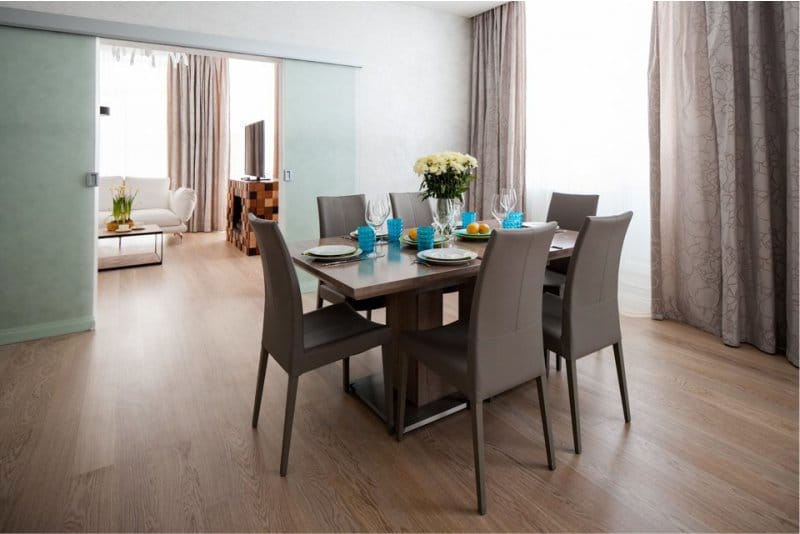
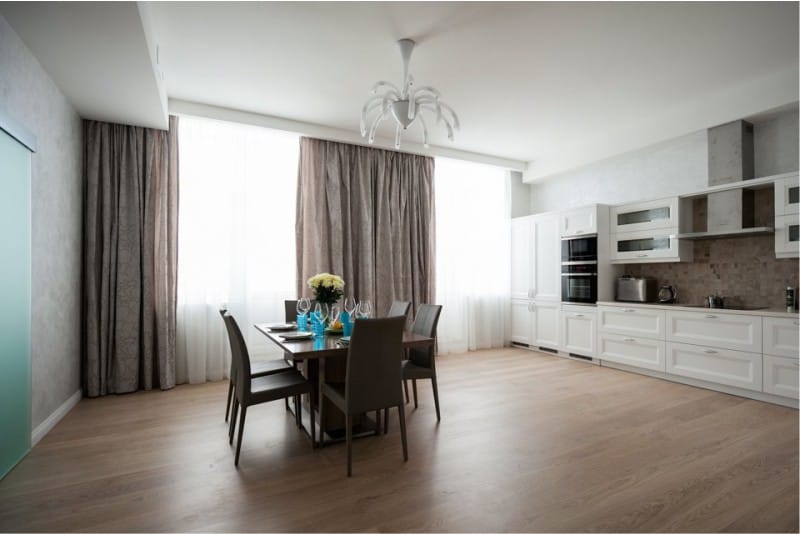

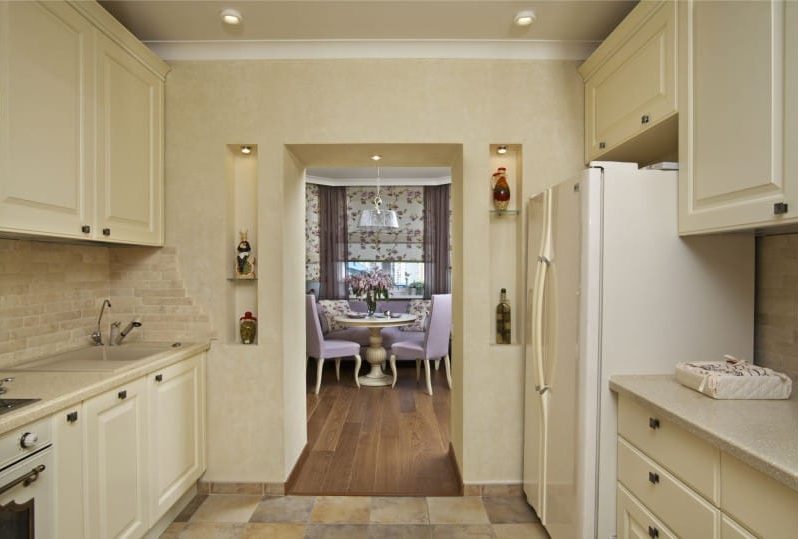
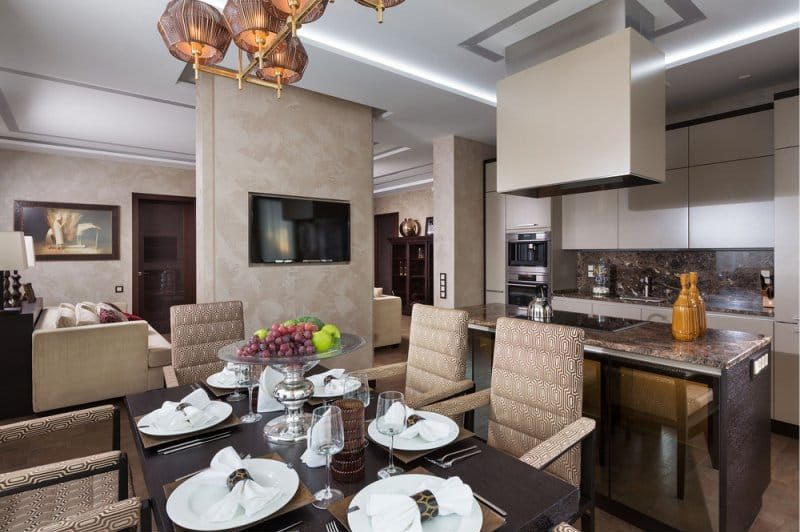
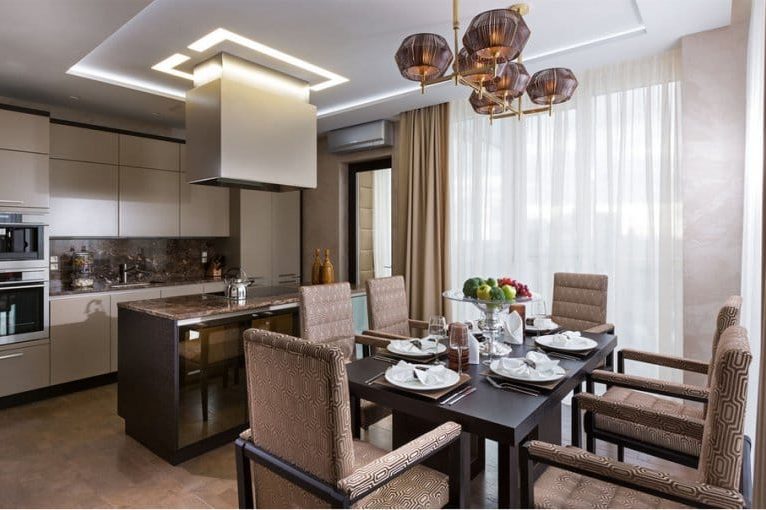
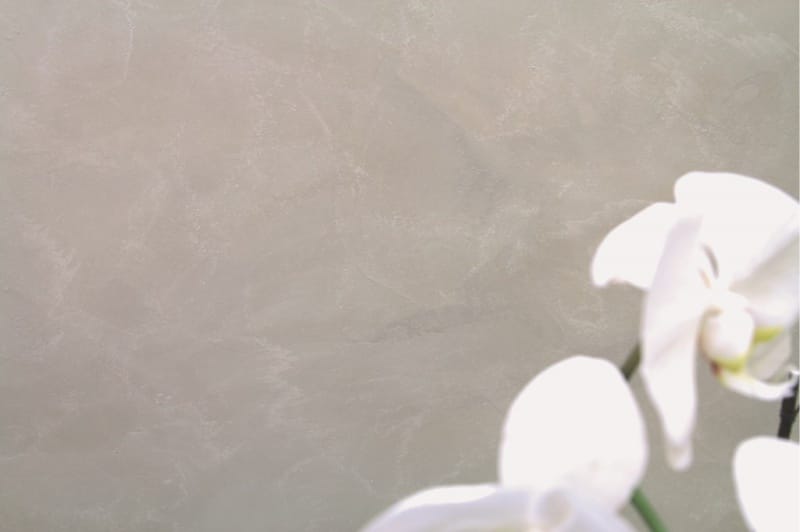
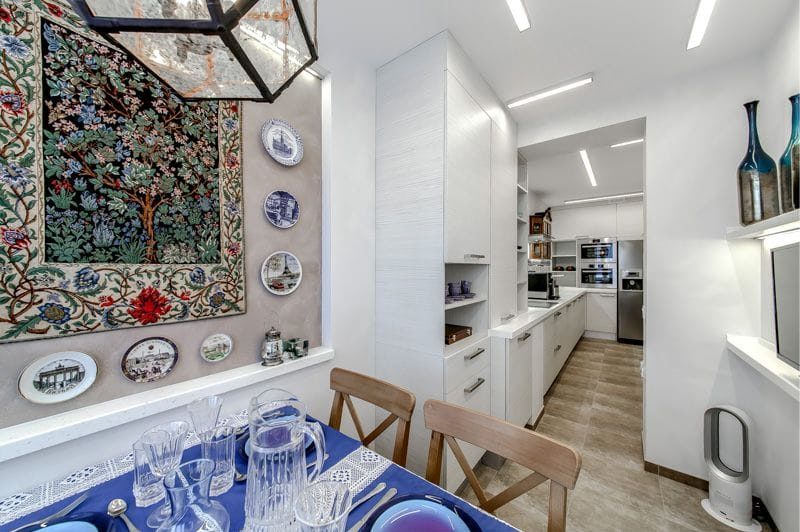
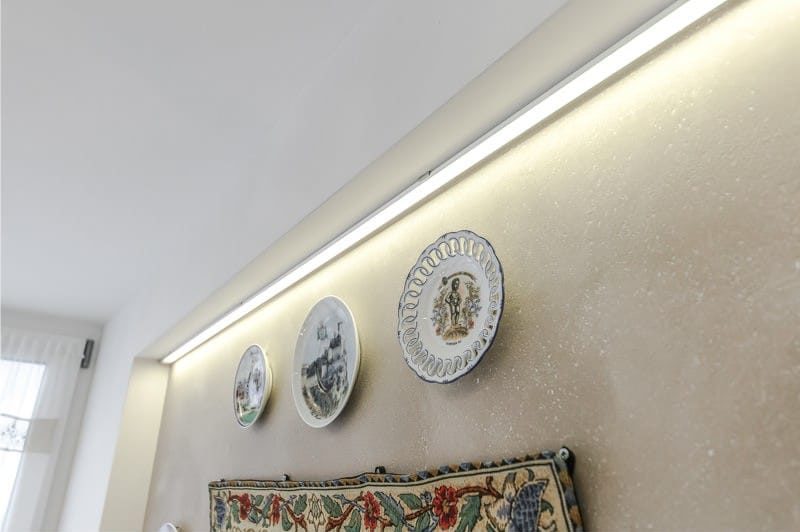

I really like the craquelure effect, but I did not dare to use such plaster in the kitchen, it will be difficult to wash the surfaces. Friends advised Venetian plaster for the kitchen. But the living room was done in the style of shebby chic, it turned out great))
Thanks for the tips!